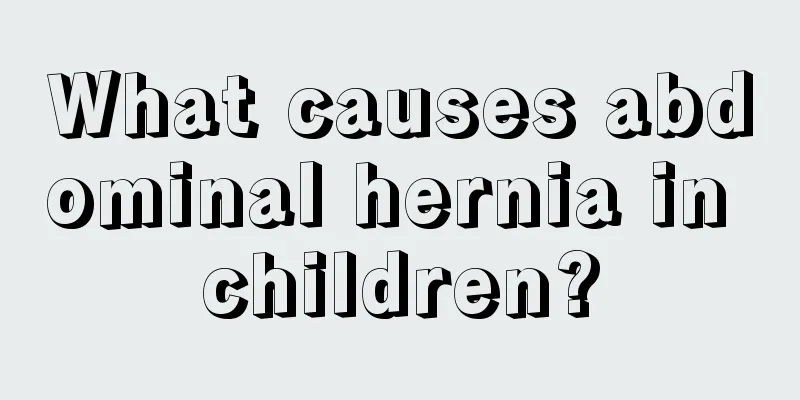Is it okay if the newborn's heart rate is over 90?

|
A newborn's heart rate of 90 is generally considered to be too slow. The reason for this phenomenon may be sinus arrhythmia or an organic heart disease in the body. If the baby is relatively young, it is best to take the child to the hospital for relevant examinations and treatments in time, and be sure to go to a regular and professional large hospital. Do not go to some smaller hospitals for the sake of cheapness, as this will easily delay the disease. Is sinus rhythm a disease? There is a special small nodule on the right atrium of the human body, which is composed of special cells and is called the sinoatrial node. It can automatically and rhythmically generate electric current, which is transmitted to various parts of the heart in the order of conduction tissue, thereby causing contraction and relaxation of myocardial cells. The normal heartbeat of the human body originates from here, which is the "pacemaker". Every time the sinoatrial node generates an impulse, the heart beats once, which is medically known as "sinus rhythm." Therefore, the normal heart beat should be sinus rhythm. The sinoatrial node is the highest "command center" of heart beats. Therefore, a normal heart must have a normal sinoatrial node, and a normal sinoatrial node has strong autonomy. Any heart rhythm formed by the excitation of the sinoatrial node is collectively called sinus rhythm. The frequency of the sinoatrial node is 60 to 100 beats per minute, but 25% of young people have a heart rate of 50 to 60 beats per minute, children under 6 years old can exceed 100 beats per minute, and newborns can reach 100 to 150 beats per minute. Sinus arrhythmia diagnostic tests diagnosis 1. Diagnosis of respiratory sinus arrhythmia (1) In the same lead, the difference between adjacent sinus PP intervals is greater than 0.16s (0.12s). (2) The PP interval shortens during inhalation and the sinus rhythm increases; it lengthens during exhalation and the sinus rhythm slows down. The PP interval changes cyclically, gradually shortening and lengthening. 2. Diagnosis of ventricular sinus arrhythmia (1) The sinus P wave has the same morphology This type of sinus arrhythmia often occurs in patients with second, high, and third degree atrioventricular block, as well as with junctional premature contractions and ventricular premature contractions, and can be detected by careful measurement. (2) Comparison of the changing characteristics of the PP interval with and without the QRS complex 2. ECG characteristics of non-respiratory sinus arrhythmia The electrocardiographic features are similar to those of respiratory sinus arrhythmia. In the same lead, the difference between adjacent sinus PP intervals was greater than 0.16s (0.12s). The difference is that the change of PP interval is not related to the respiratory cycle. The heart rate often increases suddenly. Symptoms of sinus arrhythmia 1. Sinus tachycardia is one of the manifestations of sinus arrhythmia. Sinus tachycardia refers to the heart rate exceeding the normal heart rate range of the same age group. A heart rate over 100 beats/minute is considered tachycardia in an adult. In short, the heartbeat is too fast and exceeds the normal range, which is a common arrhythmia. 2. Sinus bradycardia: The heart rate is opposite to the heart beat, and the heart rate is too slow, less than 60 beats/minute. Severe sinus arrhythmia can affect the blood flow of important organs such as the heart and brain, causing symptoms such as dizziness and vertigo. Sinus arrhythmia is more common in vasovagal syncope, intracranial hypertension, myxedema, obstructive jaundice, and digitalis poisoning. 3. Sinus arrhythmia is a condition in which the heart rate is significantly different between fast and slow. Sometimes the heart rate changes periodically with breathing, generally increasing gradually during inhalation and slowing down during exhalation. Some sinus arrhythmias have nothing to do with breathing. Some ventricular phase sinus arrhythmias are more common in high-grade or complete atrioventricular block. |
<<: How to promote bowel movements in newborns?
>>: Is perfume harmful to newborns?
Recommend
What medicine should children take after fever and cough
Since children have weaker immunity than adults, ...
Reasons for yellow complexion in children
One issue that parents are very concerned about i...
Brain cysts in children
We all know that children are the fruit of every ...
What is the reason for children's poor memory? Mom, do you know?
Children with poor memory can give parents a head...
Can children with tics be cured?
Tourette syndrome is actually a chronic disease i...
What should I do if my child has growing bone pain?
Some children in the growth and development stage...
What are the white spots on the child's hair?
If a child has a lot of white spots on his hair, ...
Redness around the baby's eyes
Everyone knows that redness around the eyes of ba...
Why does a child have a fever but his body is hot but his hands and feet are cold?
Children have very low resistance and very limite...
What to do if your three-year-old baby gets chickenpox
Varicella is a relatively common infectious skin ...
Is it good for children to exercise more?
Children usually have incomplete development of t...
7 month old baby sleeping time
Your baby's sleep schedule should change afte...
What to do if your child is picky about eating
Children's picky eating and anorexia is a pro...
Can babies get rhinitis?
Nowadays, the number of people suffering from rhi...
Tetany in children?
Tetany is a common disease in children. Most case...









